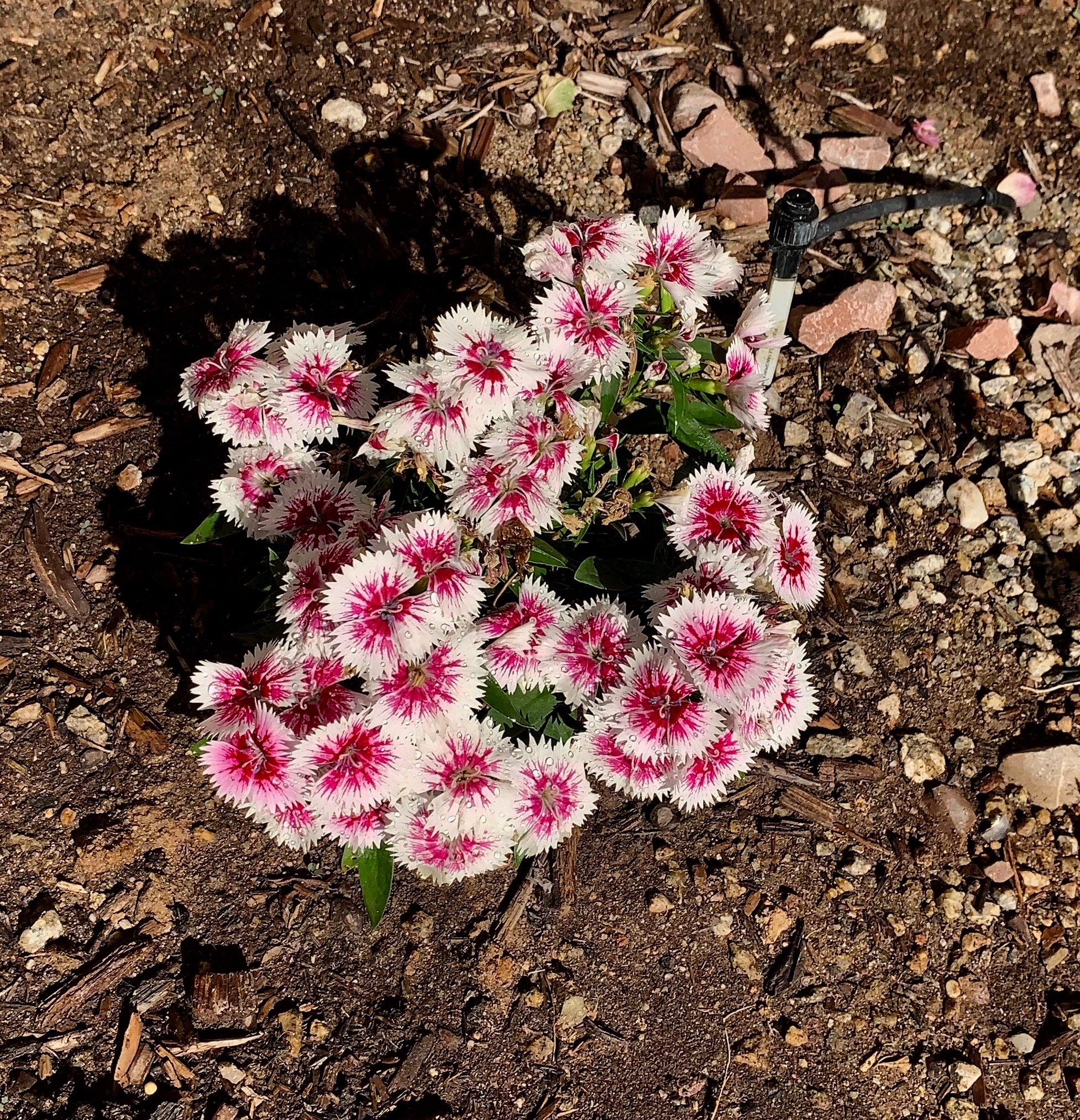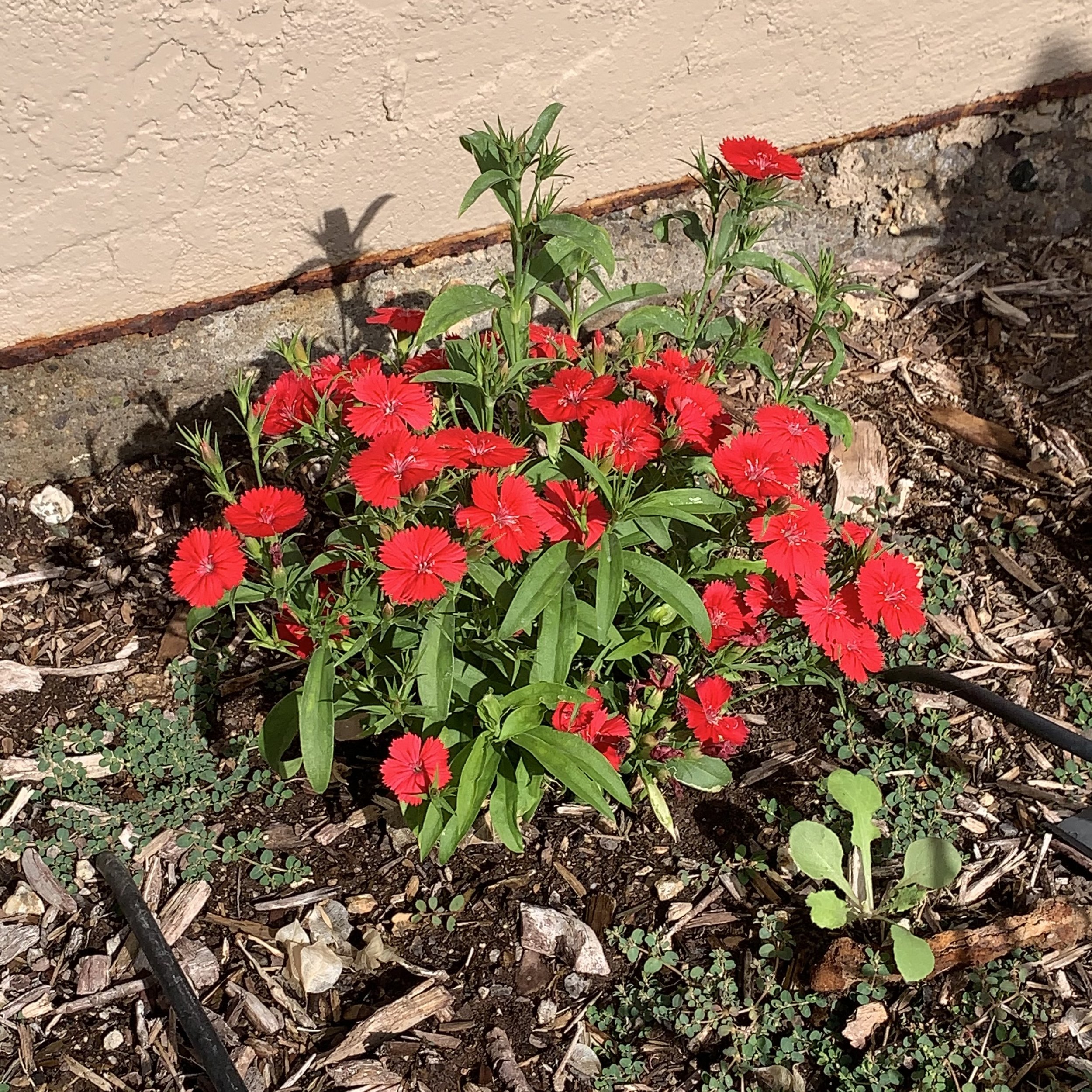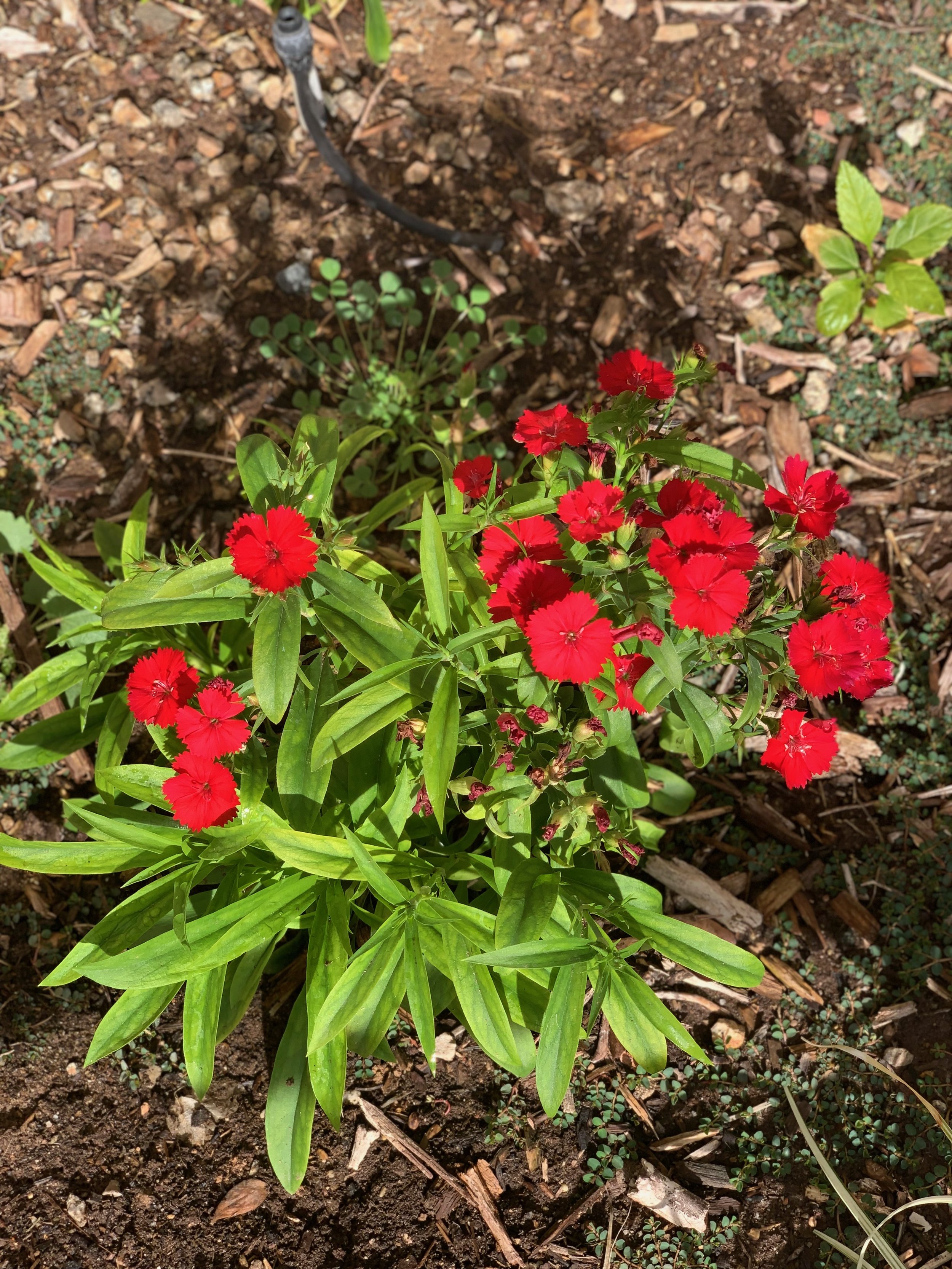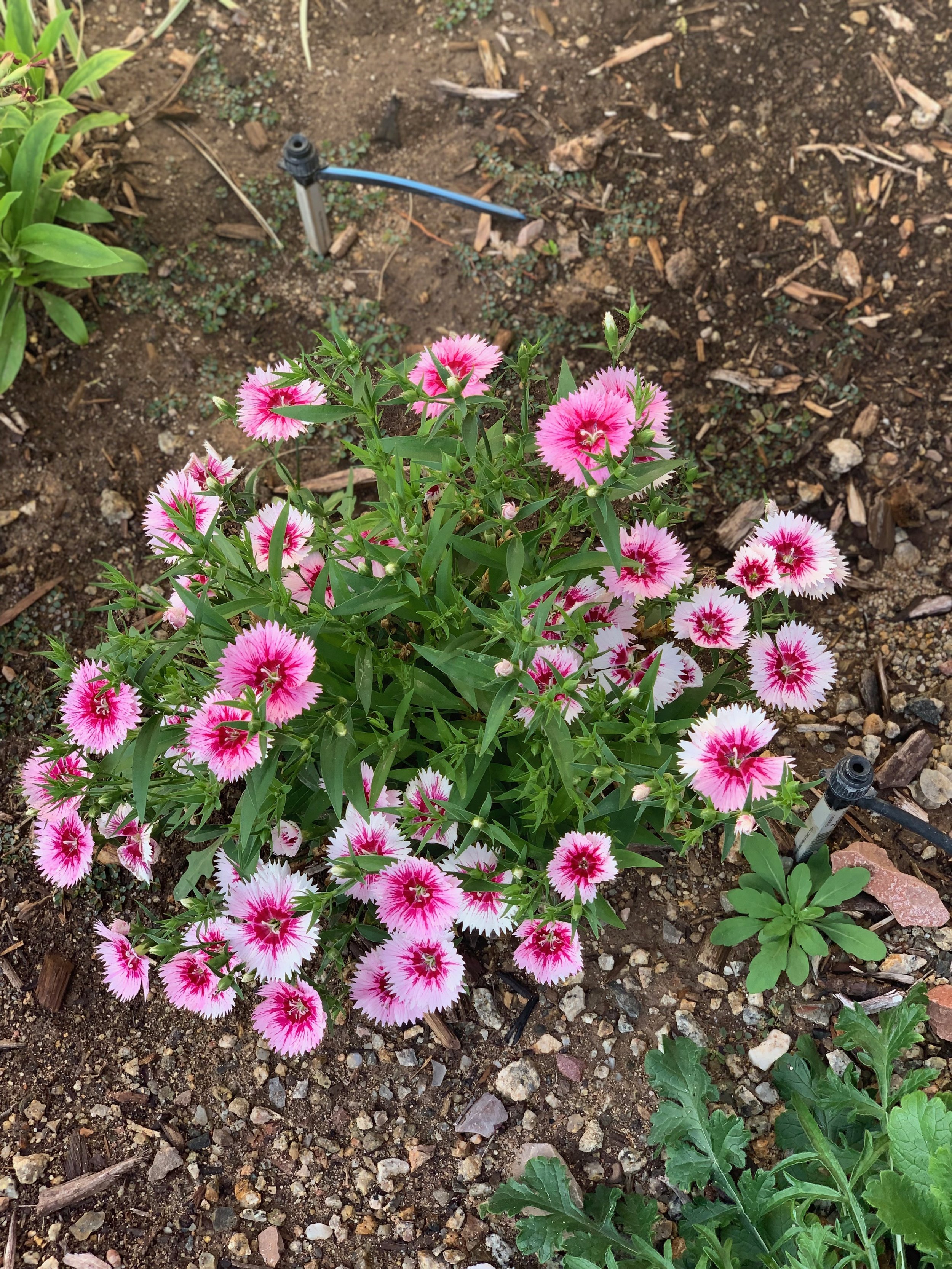Lovely Littles
Our happy little winter plants, Dianthus, are thriving here in January, even after some super cold and rainy days in December. They are bright and healthy and kicking off the new year with pretty bold colors.
I planted these pictured below during the 2nd week of November (2021) and they have bloomed twice already.
Dianthus flowers come in pink, white, red, lavender and many have a lighter colored rim. ‘Picotees’ solid colors, edged with another color and ‘Eyes’ feature a different coloring in the center. Bicolored are often have an appearance of being, ‘streaked’.
Dianthus can tolerate a light frost (which we had for 2-3 days) but they will perish from a hard freeze. If our winter temperatures goes below 35 degrees then we cover the little guys with pillowcases or burlap.
Although known in the valley as a wonderful winter annual, I find that Dianthus can be perennial, annual, or biennial plants. If I stayed here in Arizona during the summer with the plants protected from the direct, frying sun and given plenty of water, then they could certainly be a perennial. The plant won’t bloom but would look like a feathery, little bush. They can have either silver-green or blue-gray leaves, usually forming a tight mound. The blooms come in the cooler, end of the year temps and remain until approximately April and last about 8 weeks. Dianthus flowers rise from two inches up to two feet above the leaves. They will reseed themselves and continue to spread, if not deadheaded. I regularly deadhead them as the blooms begin to shrivel by just pinching off the spent blooms and dropping them in the dirt, left to deteriorate.
Dianthus are fragrant and attract butterflies. When I stand near mine, I am reminded of the scented dryer sheets.
Daily watering, such as a drip system once a day for 4- 5 minutes is necessary during the winter unless it rains, then I wouldn’t water for maybe 4 days. I apply fertilizer every six to eight weeks. If you are traveling for a long while you can just add a slow-release fertilizer into the soil.
Dianthus are perfect for plant containers and will bring a splash of color to urban gardens, but are happiest in rich, well-draining soil that's kept evenly moist, not soggy. So be sure the planter has drain holes and is placed in the winter sun for at least 4-5 hours daily. They prefer a slightly alkaline, (which some refer to as ‘sweet soil’) or a mixture of sandy soil in a pot/planter.
For us, the dianthus do best in the winter, in the ground with at least six hours of full sun. Ours has the morning sun which keeps them blooming but I’ve seen them tolerate partial shade, too.
Note: if Alkaline soil is above 7, it usually contains a great deal of sodium, calcium, and magnesium. Since alkaline soil is less soluble than acidic or neutral soil, availability of nutrients is often limited. To avoid stunted growth, I apply a small amount of sulphur and amend soil with a little peat moss or wood chip. I add a homeopathic shock resistant, Aconite, as well as some liquid vitamin B; then after 2 weeks from the planting I’ll add a time release fertilizer.
I enjoy dianthus as they are subtle, low-to-the ground with pretty small flowers. They are very easy to care for and CLEAN; And who needs a messy high maintenance plant to care for during the busy holiday season? They make your yard look nice and well-cared for; even when you don’t have time.
Dianthus live approximately 4 years, after which time they will get woody and scraggly looking with no more blooms. I am told that they are easy to propagate, by placing cuttings in a small pot with dark alkaline soil then kept moderately damp, in 4-5 hours of sun. But I have never done that. Let me know if you have and if it works. Below you can see my little lovelies… the perfect little winter blooming flower. They bring to mind the upcoming Valentine’s Day💖




